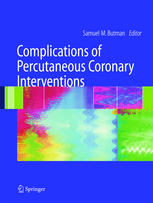

Most ebook files are in PDF format, so you can easily read them using various software such as Foxit Reader or directly on the Google Chrome browser.
Some ebook files are released by publishers in other formats such as .awz, .mobi, .epub, .fb2, etc. You may need to install specific software to read these formats on mobile/PC, such as Calibre.
Please read the tutorial at this link: https://ebookbell.com/faq
We offer FREE conversion to the popular formats you request; however, this may take some time. Therefore, right after payment, please email us, and we will try to provide the service as quickly as possible.
For some exceptional file formats or broken links (if any), please refrain from opening any disputes. Instead, email us first, and we will try to assist within a maximum of 6 hours.
EbookBell Team

4.7
96 reviewsPercutaneous coronary catheterization has become one of the most common medical interventions performed in the field of interventional cardiology. With the continual technical improvements in interventional cardiology, more procedures are being performed and higher risk patients are being treated. Complications are bound to occur, and when they do, they are distressing to the clinician. Too often, clinicians performing an interventional procedure are unprepared and lack complete familiarity with some of the possible adverse events or the many creative methods available to them to reverse or mitigate the event.
This book provides the reader with a valuable overview of the complications associated with coronary interventions. The editor, Samuel M. Butman, MD, has assembled a group of contributors renowned for their expertise in interventional cardiology. Chapters are concise but comprehensive and present actual case examples for review. Topics covered include complications related to medication, coronary guidewires, coronary stenting, atherectomy devices, and radiation exposure. Useful illustrations reinforce key concepts.
Complications of Percutaneous Coronary Interventions fills a void for interventional cardiologists, residents, and technologists who need to learn about effectively preventing complications or who simply want to more confidently institute appropriate treatment.